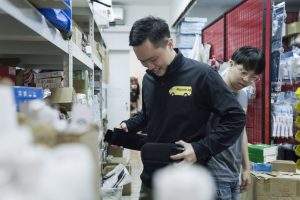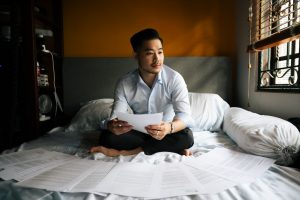A stillness fills the air as I turn onto Lorong 3 Geylang, which is quietly tucked away in between an industrial loading bay, a canal, and a HDB block. The only crackle of sound within earshot comes from an uncle riding his bicycle down the lane.
I stop him for a moment to ask him about this place.
“A lot of artists used to come here to paint,” he says bluntly, taking a last look at the place before zooming off. Occasionally, I notice a painted strip of canvas among the debris on the floor, or hanging crooked off a dusty wall.
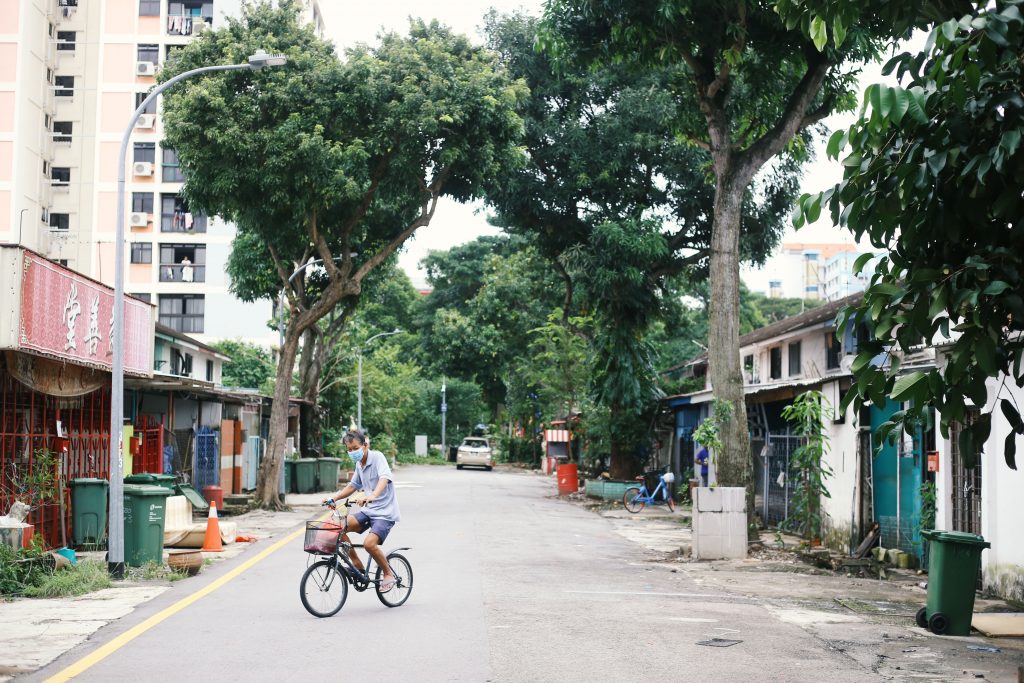
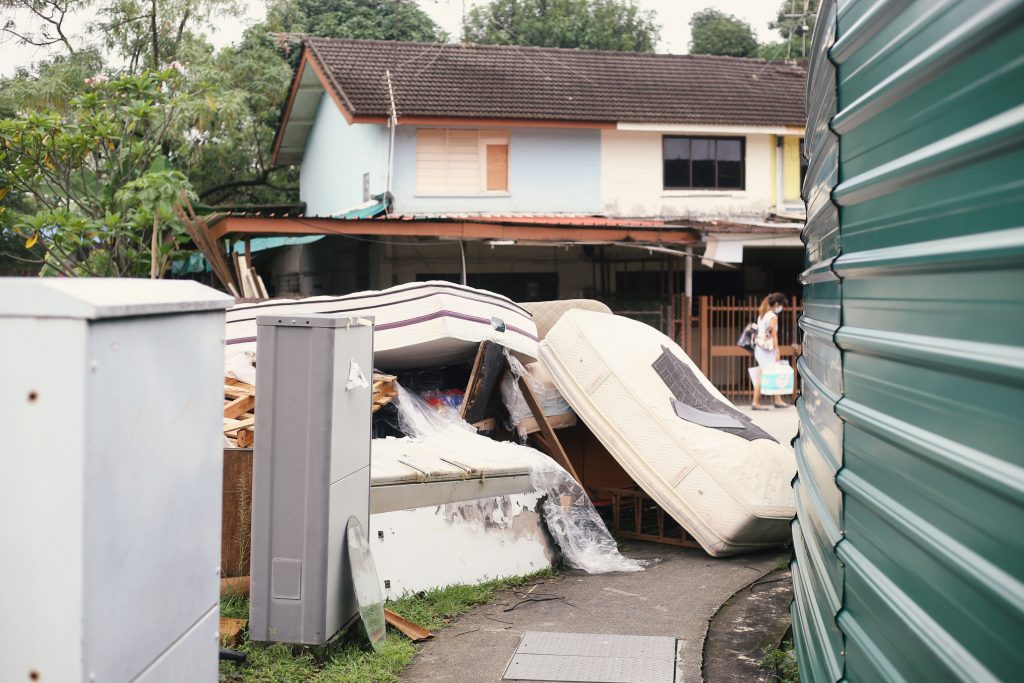
Seeing it in these conditions, I find it hard to believe it was once a thriving community, one I imagine looked vastly different in its prime. But that community came to an end on December 31 2020, when the 60-year-leases of the terrace houses of Lorong 3 Geylang expired, marking the first time Singapore has seen the government take back residential properties.
Which is why I find myself here, to take one last look at the two hectare block of land before it gets permanently sealed off for redevelopment.



And what strikes me most about Lorong 3 is the diversity of establishments that coexist in one place. Walking through, I pass a home, a migrant worker dorm, a Hindu temple, and a Buddhist temple within steps of each other.
I try to imagine what it must have been like on any regular evening. Temple chants filling the air while workers gather on the streets. Locals walking their dogs, stopping to chat with their neighbours drinking on their porch. I sense a kind of closeness, the sort unseen now in our new Covid-19 reality. I also imagine a kind of integration we won’t be seeing anymore, as the Lorong 3 forieign workers are relocated to purpose-built dormitories.

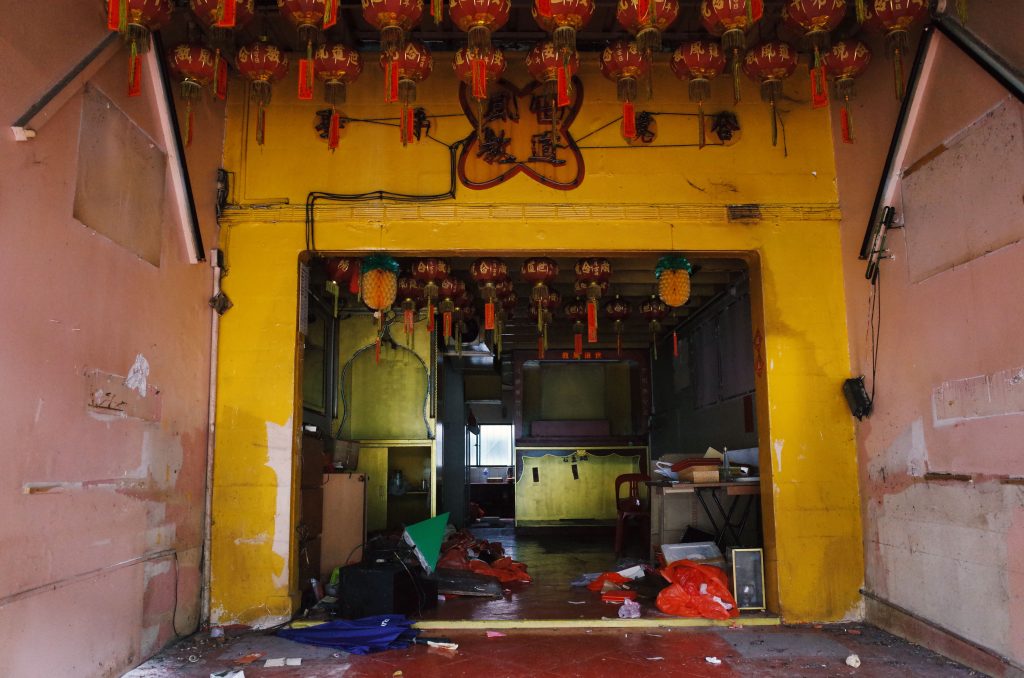
As I turn back onto the main street, I bump into an auntie walking swiftly with a trolley. “I’m looking for a plant,” she answers when I ask her why she is here. “My friend who used to live here told me they used to plant many medicinal herbs and flowers.”
When I ask what she thinks of the lease ending, her tone softens. This kind of kampong architecture is what a lot of Singapore used to look like when she grew up, she recalls.
“I want to see my childhood before it’s gone.”

“Move back!” a man shouts, holding a stick at least two meters long to a tree, which he uses to push fruits I can’t recognise from a tree.
“These are mangoes. Perfect for mango salad. Do you want one?” he laughs as I approach him.

It was a small family temple, his wife shares as she emerges from the next lane with a moringa plant in hand. Only 5 or 6 people would go in to pray at a time, but they liked it because they knew everyone in the neighbourhood.
“I like the houses here, they all have a small garden to grow plants or chickens.”
The couple struggles to wave goodbye as they enter their car juggling two hands full of produce.
I look at the toys, old photographs, and notes to loved ones that are left behind. It’s a nostalgic site, but it’s hard to indulge in when you’re interrupted by the decaying surroundings.
What would have come of this place if the lease had not expired? Maybe the rustic lifestyle of such a place would have attracted creatives to the neighbourhood—allowing a splash of colour to thrive in a sea of monotonous architecture.
But maybe—and quite possibly—it would have continued to decay.
Is it best, then, to let go of a place whose beauty has faded to make way for new communities?
Today, Singapore continues to grapple with this question.




